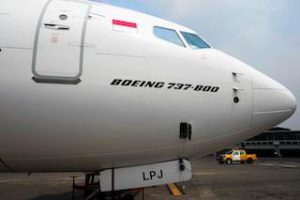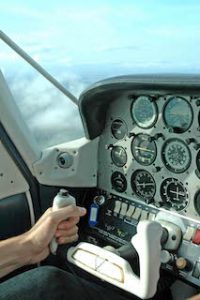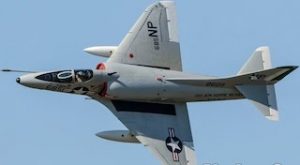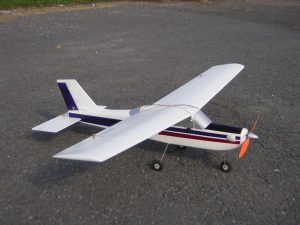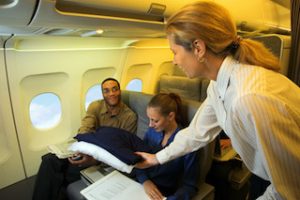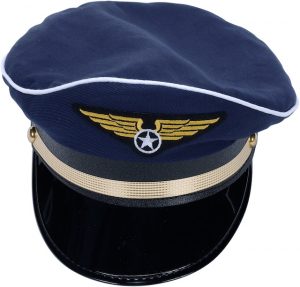Mastering The Simulator Check In The Airline Selection Process
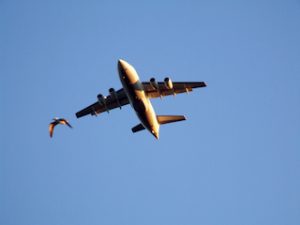 In the highly competitive field of aviation, the selection process for aspiring airline pilots is rigorous and demanding. Among the various stages that candidates must navigate, the simulator check flight stands out as one of the most critical phases. This phase is not merely a test of a candidate’s theoretical knowledge; it is a comprehensive assessment of their practical flying performance, particularly their ability to handle a jet aircraft in a simulated environment. The outcome of this phase often plays a decisive role in determining whether a candidate will progress to the next stage of the selection process or even secure a position with an airline.
In the highly competitive field of aviation, the selection process for aspiring airline pilots is rigorous and demanding. Among the various stages that candidates must navigate, the simulator check flight stands out as one of the most critical phases. This phase is not merely a test of a candidate’s theoretical knowledge; it is a comprehensive assessment of their practical flying performance, particularly their ability to handle a jet aircraft in a simulated environment. The outcome of this phase often plays a decisive role in determining whether a candidate will progress to the next stage of the selection process or even secure a position with an airline.
Simulator check flight in pilot selection
The simulator check flight is designed to replicate the challenges and scenarios that a pilot might encounter in a real-world flying environment. By placing candidates in a high-fidelity flight simulator, airlines can evaluate their abilities to manage a complex, dynamic aircraft under various conditions. Unlike traditional written or oral exams, which primarily test a candidate’s knowledge, the simulator check flight assesses a pilot’s ability to apply that knowledge in real-time, under pressure, and in situations that require quick thinking and decisive action.
Airlines place significant weight on the simulator check flight because it provides a direct insight into a candidate’s potential performance as a pilot. While academic achievements and theoretical knowledge are important, they are not sufficient on their own. The simulator check flight allows airlines to see how well a candidate can translate their knowledge into practical skills, and how they respond when faced with the unexpected. This phase of the selection process is not just about flying; it’s about demonstrating the ability to handle the responsibilities and pressures that come with being a commercial pilot.
Jet handling skills
At the core of the simulator check flight is the evaluation of a candidate’s jet handling skills. These skills are fundamental to the safe and efficient operation of a jet aircraft and are a key indicator of a candidate’s readiness to operate as a professional pilot. Jet handling encompasses a wide range of competencies, from basic control inputs to more advanced maneuvers and emergency responses.
One of the primary aspects of jet handling is the ability to control the aircraft smoothly and precisely during all phases of flight. This includes takeoff, climb, cruise, descent, and landing. Each phase requires a different set of skills and a deep understanding of the aircraft’s performance characteristics. For instance, during takeoff, a pilot must manage the aircraft’s thrust, speed, and attitude to achieve a safe and efficient departure. During landing, the pilot must be able to manage the aircraft’s descent rate, approach speed, and alignment with the runway, all while considering factors such as wind, weather, and runway conditions.
In addition to normal operations, candidates must also demonstrate their ability to handle abnormal or emergency situations. This could include engine failures, hydraulic or electrical system malfunctions, or unexpected weather conditions. In these scenarios, a pilot’s jet handling skills are put to the test, as they must maintain control of the aircraft, manage the situation effectively, and execute the appropriate procedures to ensure the safety of the flight.
The simulator check flight is designed to challenge candidates in these areas, requiring them to apply their knowledge and skills in a dynamic and often stressful environment. Success in this phase is not just about flying the aircraft; it’s about demonstrating the ability to manage the aircraft in a way that is safe, efficient, and in line with standard operating procedures.
Decision-making abilities
While jet handling skills are crucial, they are not the only competency that is evaluated during the simulator check flight. Another critical aspect of this phase is the assessment of a candidate’s decision-making abilities. In aviation, decisions must often be made quickly, with limited information, and under significant pressure. The ability to make the right decision at the right time is one of the most important qualities of a professional pilot.
The simulator check flight is designed to test a candidate’s decision-making skills in a variety of scenarios. These scenarios are often complex and require the pilot to assess the situation, prioritize tasks, and make decisions that will ensure the safety of the flight. For example, a candidate might be presented with an engine failure shortly after takeoff, a situation that requires quick thinking and decisive action. The pilot must determine the best course of action, taking into account factors such as the aircraft’s altitude, speed, and position relative to the airport. They must then execute the appropriate procedures, all while maintaining control of the aircraft and communicating with air traffic control.
In addition to emergency situations, candidates are also tested on their ability to make decisions during normal operations. This could include determining the best flight path to avoid weather, selecting the appropriate speed and altitude for the descent, or deciding whether to continue with an approach in marginal weather conditions. In each case, the candidate must demonstrate their ability to weigh the options, consider the potential risks and benefits, and make a decision that is in the best interest of the safety and efficiency of the flight.
Effective decision-making in aviation is not just about following procedures; it’s about understanding the underlying principles and applying them in a way that is appropriate for the situation. The simulator check flight provides a realistic and challenging environment in which candidates can demonstrate their ability to make sound decisions, even under pressure.
Adherence to Standard Operating Procedures
Standard Operating Procedures (SOPs) are the backbone of safe and consistent flight operations. These procedures are developed by airlines and regulatory authorities to ensure that all pilots operate in a standardized manner, reducing the risk of errors and increasing the safety of flight operations. Adherence to SOPs is not just a regulatory requirement; it is a fundamental aspect of professional flying.
During the simulator check flight, candidates are evaluated on their ability to follow SOPs accurately and consistently. This includes everything from pre-flight checks to in-flight procedures and post-flight actions. The purpose of this evaluation is to ensure that candidates not only understand the procedures but also have the discipline to follow them precisely, even in challenging situations.
One of the key aspects of SOP adherence is the use of checklists. Checklists are a critical tool in aviation, helping pilots ensure that all necessary tasks are completed and that nothing is overlooked. During the simulator check flight, candidates must demonstrate their ability to use checklists effectively, following each step carefully and ensuring that all required actions are completed. This is particularly important in situations where time is limited, such as during an emergency, where the correct use of a checklist can make the difference between a safe outcome and a potential disaster.
Another important aspect of SOP adherence is communication. Pilots must be able to communicate clearly and effectively with their crew, air traffic control, and other relevant parties. This includes providing accurate and timely information, following standard phraseology, and ensuring that all communications are understood. During the simulator check flight, candidates are assessed on their ability to communicate in a manner that is consistent with SOPs, ensuring that all necessary information is conveyed and that the flight is conducted safely and efficiently.
Adherence to SOPs is not just about following rules; it’s about ensuring that all aspects of the flight are conducted in a safe and consistent manner. The simulator check flight provides a realistic environment in which candidates can demonstrate their understanding of SOPs and their ability to apply them in a variety of situations.
Scoring highly in the simulator check flight
Given the critical nature of the simulator check flight, it is no surprise that airlines place significant weight on this phase of the selection process. Scoring highly in the simulator check flight is essential for candidates who wish to progress to the next stage of the selection process or secure a position with an airline. The results of the simulator check flight are often seen as a direct indicator of a candidate’s potential to perform in a real-world flying environment.
A high score in the simulator check flight demonstrates that a candidate has the necessary skills, knowledge, and judgment to operate a jet aircraft safely and efficiently. It shows that they are capable of handling the complexities and challenges of professional flying and that they can be trusted to make the right decisions in critical situations. For airlines, this is a key factor in determining whether a candidate is suitable for the role of a pilot.
On the other hand, a low score in the simulator check flight can be a significant barrier to progression in the selection process. It suggests that the candidate may not yet have the necessary skills or experience to operate a jet aircraft safely and that further training or experience may be required. In some cases, a low score may result in the candidate being eliminated from the selection process altogether.
Laminar Sim’s training courses
Given the importance of the simulator check flight, it is essential that candidates are well-prepared for this phase of the selection process. This is where specialized training programs, such as those offered by Laminar Sim, can make a significant difference. Laminar Sim’s simulator training courses are specifically designed to help pilots master the key competencies required to excel in the simulator check flight.
One of the key benefits of Laminar Sim’s training courses is the focus on jet handling skills. Through a combination of theoretical instruction and practical simulator sessions, candidates can develop a deep understanding of jet aircraft operations and gain the experience needed to handle a variety of flight scenarios. The training is designed to replicate the conditions and challenges that candidates will face during the simulator check flight, providing them with the opportunity to practice and refine their skills in a controlled environment.
In addition to jet handling, Laminar Sim’s courses also place a strong emphasis on decision-making abilities. Candidates are taught how to assess situations, prioritize tasks, and make decisions that are in line with best practices and standard operating procedures. The training includes a variety of scenarios that challenge candidates to think critically and act decisively, preparing them for the types of situations they may encounter during the simulator check flight.
Adherence to SOPs is another critical area of focus in Laminar Sim’s training programs. Candidates are taught the importance of following procedures accurately and consistently, and they are given the
opportunity to practice these skills in the simulator. This includes the use of checklists, effective communication, and the application of SOPs in both normal and emergency situations.
By providing comprehensive training in these key areas, Laminar Sim helps candidates build the confidence and competence needed to excel in the simulator check flight. The training is designed to not only improve a candidate’s performance in the simulator but also to prepare them for the challenges of professional flying.
Path to success in the simulator check flight
The simulator check flight is a critical phase in the pilot selection process, offering a comprehensive assessment of a candidate’s flying performance, decision-making abilities, and adherence to standard operating procedures. Scoring highly in this phase is essential for candidates who wish to secure a position with an airline, as it directly correlates to their ability to perform in a real-world flying environment.
To excel in the simulator check flight, candidates must have a deep understanding of jet handling and be able to apply this knowledge effectively in a simulated environment. They must also demonstrate strong decision-making abilities, particularly in situations that require quick thinking and decisive action. Additionally, they must adhere strictly to standard operating procedures, ensuring that all aspects of the flight are conducted safely and consistently.
Laminar Sim’s simulator training courses are specifically designed to help pilots master these key competencies, providing them with the skills, knowledge, and experience needed to succeed in the simulator check flight. By investing in this training, candidates can significantly improve their chances of scoring highly in this critical phase of the selection process and achieving their goal of becoming a professional airline pilot.
Let’s touch base

